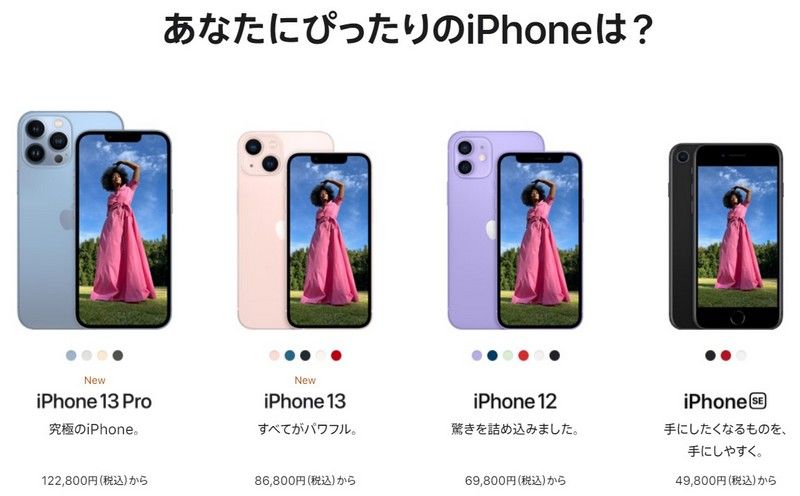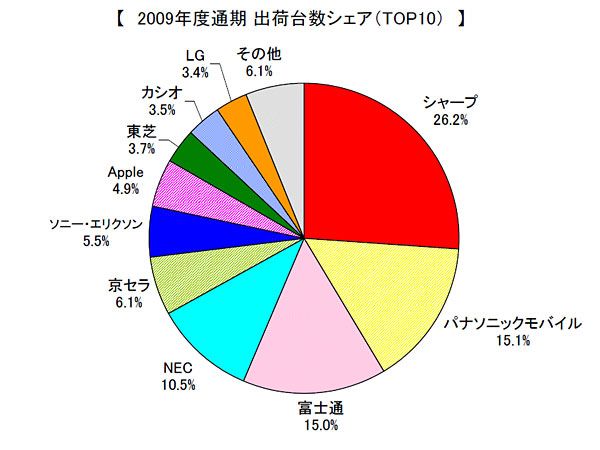
扎根日本的閒者,披露日本的不同面向,深入認識更真實的日本。 ( ^_^)/~~~ My blog https://motonojp.com/
Why do Japanese like iPhones?
When it comes to iPhone, everyone knows that it is a well-known mobile phone brand launched by Apple in the United States. The market share of iPhone in the United States is very high, which once exceeded 60%. Of course, it is not only the United States, the iPhone has captured most countries in the world, and Japan can be said to be the country that loves the iPhone the most. In the era before the iPhone, if the Japanese were told that for a long time in the future, the vast majority of Japanese citizens would be holding foreign-made mobile phones, they would certainly not believe that such a thing would happen.

In 2007, Steve Jobs showed the world the original iPhone, and then it officially landed in the Japanese market at the end of 2008. Prior to this, some manufacturers such as Blackberry and HTC have launched handheld devices such as PDAs similar to smart phones. The market share of domestic mobile phone manufacturers in Japan in 2009, the first anniversary of the iPhone's official sales in Japan, is as follows.

The highest market share of 26.2% is Sharp (シャープ), which has been acquired by Hon Hai, and has been the top player for five consecutive years. Panasonic ranked second with 15.1%, Apple ranked seventh, with a market share of only 4.9%, and all of them were Japanese local mobile phone manufacturers before him.
It took Apple less than 3 years to let the iPhone jump to the number one position in the Japanese market in 2012. Since then, Yiqi Juechen has never fallen to the top of the list, far behind all Japanese mobile phone manufacturers.

What is the charm of the iPhone that has made the Japanese people infatuated with it for more than ten years?
Needless to say, the design aesthetics and product details that come with Apple products, this part of Made in Japan products is no less so. So what link is the Japanese mobile phone giants lacking?
Try to list the following points, the secrets to the iPhone's success in Japan.
- Traditional Japanese mobile phones are too powerful
- The closed nature of the Japanese market
- peer effect
- Brand Myths
- Apple ecosystem
- Advantages of mobile phone exchange
Traditional Japanese mobile phones are too powerful
It may not be easy to understand the meaning of this title, so let me explain it from the beginning.
I don’t know if you still remember the traditional mobile phones that can only make calls. In addition to the call function, at most, only small games such as Snake can be played. And Japan's telecommunications company NTT has been leading the world in developing i-mode in the era when traditional mobile phones were popular. At that time, the Internet was not yet popular, and Windows 95, which was equipped with standard Internet access functions, was not long before the advent of wireless Internet access for mobile phones was completely unpopular. i-mode is simply a unique Internet business model in Japan. Using the limited connection speed of the mobile phone to achieve wireless Internet access, you can use the mobile phone to send and receive emails, ringtones, browse websites (very simple websites), query weather forecasts, online banking, online games, etc. At that time, most of the Internet access charges of computers were billed by the time system, and i-mode was the first to adopt the packet system billing. Only when there were packets generated during data transmission, it was billed. Therefore, the cost of i-mode mail at that time was lower than that of SMS. The i-mode system was very advanced in the world at the time. NTT also tried to promote it to countries other than Japan. In Taiwan, it cooperated with Hexin Telecom to promote it. Unfortunately, except for the Japanese market, no country has successfully become popular.
In the early 2000s, all high-end mobile phones launched in Japan had to be equipped with the i-mode function, and because of this function, mobile phone manufacturers had to cooperate deeply with telecom operators such as NTT. Telecom companies can guarantee how many mobile phones they will sell, making it easy for manufacturers to budget for new models and new features. Such as the large-scale and colorful mobile phone screen, the megapixel camera, and the diversification of mobile phone shapes (the flip phone made in Japan flourished during this period, and there are still two lying in the drawer of my house).
Looking at the psychology of Japanese mobile phone manufacturers from another point of view, they have dominated the mountain in Japan for more than ten years, and even if they look at overseas markets, they have few rivals. This phenomenon is just like the saying goes, "the ship is difficult to turn around", so they are not worried about the new rivals that have just emerged, but suddenly change the direction of research and development, and change to accumulating the specifications and technology of smart phones.

The closed nature of the Japanese market
For the above reasons, the Japanese market has developed a unique model that differs from the specifications of mobile phones commonly used in most countries and is sold in different ways.
Japanese consumers have long been lingering in the world built by i-mode with domestic mobile phones that they know they like, and once they use the mobile phone number of a telecom company, they cannot easily change their families. In the early days, the Japanese telecommunications company NTT was the dominant family. The number of people who joined i-mode reached 49 million. If the non-target customers such as the elderly and children were not included, about half of the Japanese were captive in the i-mode world.
Before the government's policy was changed, Japanese mobile phones were in principle all code-locking machines, which meant that if you were an NTT number, you could only use the mobile phone they marketed to you. It is impossible to change a telecommunications company by changing the sim card with an empty machine as it is now. Moreover, in the early days of Japan, there were basically no short-selling machines, although mobile phone stores often hung slogans with "0 yuan mobile phones". If you want that mobile phone, you must bind the door number to take it home.
Therefore, mobile phone manufacturers must cooperate deeply with telecom operators to produce closed mobile phones exclusively for them. In addition, the domestic demand market in Japan is also large enough. Even if the overseas market is broader, due to their cautious and conservative personality, they rush into the unfamiliar market. If the initial launch fails and causes losses, no one is willing to take responsibility. Over time, the Japanese market has evolved like a creature on the Galapagos Islands far away from the mainland of Ecuador, and has been dubbed the "Galapagos Market" or "Galapagos Mobile Phone".
It is said that NTT has decided to end all related services such as i-mode and 3G radio waves by the end of March 2026. A few days ago, I released a video of "i-mode graduation performance" on YouTube, reviewing the ups and downs that i-mode brought to people. (There are a few scenes that also make me emotional...)
peer effect
Now it's almost an era of one phone for everyone. Do you remember when you started owning your first mobile phone in your life? I probably bought my first mobile phone after working for a few years. After so many years, I still remember it as a sizable royal blue NOKIA (working in Taiwan at the time).
Modern children should have their own mobile phones very early. Yesterday, by chance, I heard the phone ringing of the classmates of " Little Er " son's classmates. Although he did not ask him if the mobile phone was chosen by himself, most Japanese are buying mobile phones for the first time. The type is indeed purchased by following the friends around. The peer effect of the Japanese living in the group is very strong, especially the peers in the school days. They have to do everything together, play games, and watch TV shows together. Otherwise, they will be afraid that they will not have a common topic when they arrive at school the next day.
When a friend around you buys an iPhone, it is easy to drive this small circle of people to buy an iPhone. One circle drives another circle, and it quickly becomes popular. The same is true for i-mode back then, and the same is true for the more recent LINE .
Brand Myths
When Japan entered the ranks of advanced countries, the people were prosperous and the economy was prosperous, it naturally began to pursue material enjoyment. With plenty of material, it is a hassle to choose what you want from a bunch of similar products, especially for Japanese people who have many difficulties in choosing. The emergence of well-known brands is a good solution to this matter. Before the iPhone entered the Japanese market, it was already a well-known mobile phone brand in the United States, and it was also the pioneer product of smart phones, defining numerous technical specifications. The Japanese love famous brands and are world-renowned. As the global luxury consumer market, Japan was once the second largest consumer market in the world.

Apple ecosystem
Those who have used Apple products should understand the advantages of the Apple ecosystem. The iPhone can seamlessly integrate with Apple's Mac, Watch, AirPods, etc. to seamlessly transfer data and many other convenient functions. It is difficult for users who have adapted to this closed environment to escape.
Advantages of mobile phone exchange
The competition in the mobile phone industry is fierce. Even big manufacturers have launched new phone models, and the cycle for consumers to buy new phones is getting shorter and shorter. In addition to lying in the drawer of the home, the old mobile phones that have been retired can also be sold at a discount to subsidize the purchase cost of the new phone. The iPhone is the best value-preserving model in the same size mobile phone.

The above are the factors that I estimate that the iPhone is loved by Japanese consumers. I think that if Apple does not make a foolish move to destroy the Great Wall, the Japanese mobile phone market will still be dominated by the iPhone in the next 5 to 10 years.
(If you are interested in the stories of Japanese telecom operators, you can refer to this article: Telecom Business in Japan's Civil War Act ) Supplementary explanation, in 2020, a fourth telecom operator " Rakuten Mobile " will be added in Japan.
2022/03/08 posted.
Original link to Japan behind-the-scenes observation
Like my work?
Don't forget to support or like, so I know you are with me..
Comment…